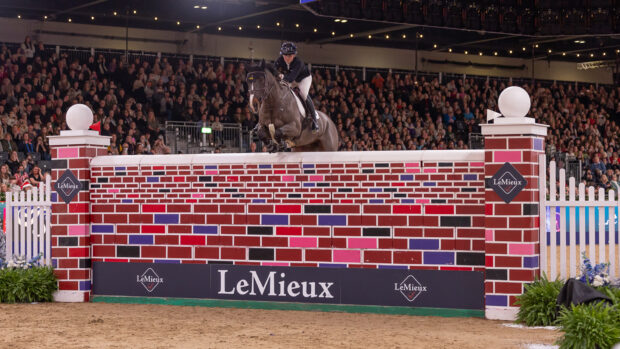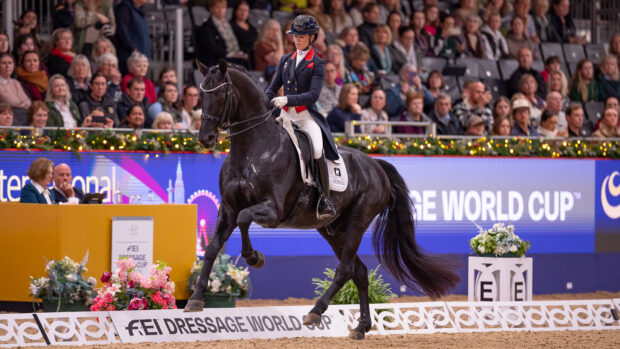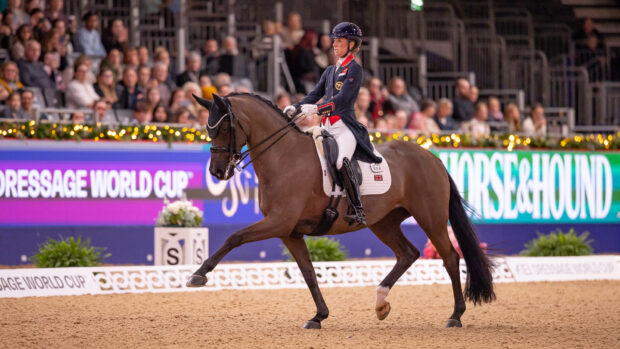The treble Grand National winner, who died at the age of 30 on this day 27 years ago (18 October), is synonymous with Aintree’s showpiece. Julian Muscat maps his story from a run-of-the-mill sprinter to a household name
Red Rum’s origins
Bay gelding, foaled 3 May 1965, died 18 October 1995
By Quorum out of Mared, by Magic Red
Owner: Noel le Mare
Trainer: Ginger McCain
Breeder: Martyn McEnery
Jockeys: Brian Fletcher, Tommy Stack
Red Rum was bred to be fast on the Flat. His sire, Quorum, was runner-up in the 2000 Guineas while his dam, Mared, was barely trainable on account of her wayward temperament. Whenever Mared ran, she was black with sweat from the neck down and white with foam around her mouth. She eventually won a small race over seven furlongs at Galway. It is often overlooked that Red Rum won three races on the Flat before he transferred to the jumping code.
NO other story in the annals of racing matches that of a horse bred to win sprint races on the Flat developing into the most formidable Grand National competitor of them all.
Red Rum was an anonymous seven-year-old when he was bought by a small-time trainer from Lancashire in 1972. Originally a second-hand car dealer, Ginger McCain gave 6,000gns for a fifth-hand horse he housed in run-down stables behind his used-car showroom in the sleepy suburb of Birkdale.
Red Rum was a virtual cripple from the day he arrived, yet Ginger saw hope where others had despaired. In his taxi-driving days, he’d befriended a regular customer in Noel le Mare, whose dream it was to win the Grand National.
Time was fast running out for Noel, who was 84 at the time. So Ginger badgered him until he relented. Noel would give Ginger funds to buy a horse, which saw Red Rum join the other equine renegades under Ginger’s wing. He had already tested the patience of four previous trainers without once alluding to the heights he would scale at Aintree – although he did dead-heat there on his racecourse debut as a two-year-old over five furlongs on the Flat.
In the end, Red Rum was retired on the eve of the 1978 Grand National, when he pulled up lame after a gallop. Then 13, he was still among the favourites. Over the previous five years, he’d completed 10 circuits over Aintree’s daunting fences while barely touching a twig.
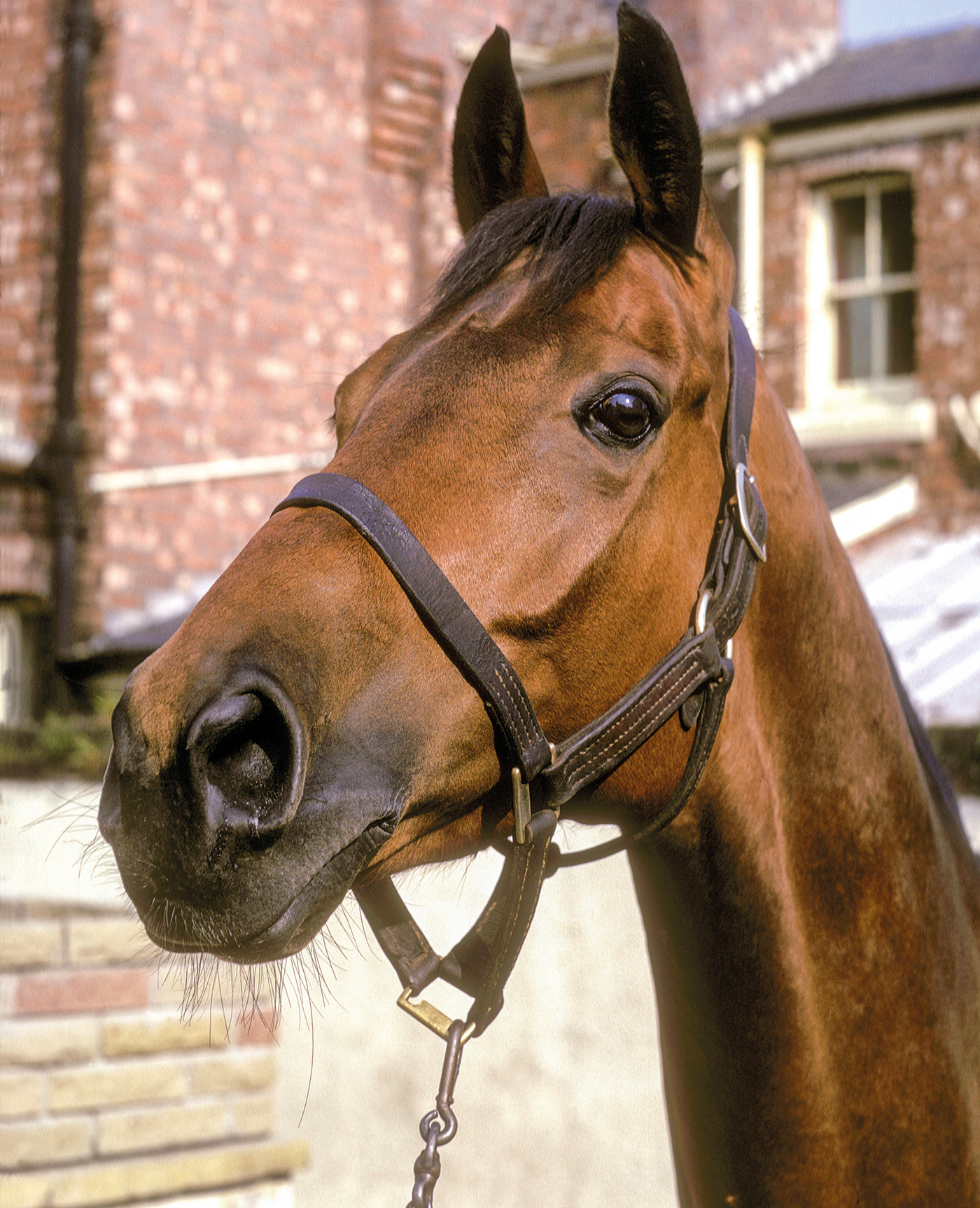
HIS record is unsurpassed. It will almost certainly endure despite significant modifications to obstacles that have taken the “tree” out of Aintree. The fences, no longer packed densely with birch, are not the force of old.
When they were, the unique nature of the test spawned a spate of Aintree specialists. In the Grand National’s heyday, extravagant jumpers who cleared their obstacles with feet to spare wasted precious energy. Equally, horses prone to jumping through the top of a fence would tip over.
Red Rum’s great strength was his ability to measure each fence with an economy of effort. And there was something about Aintree, then a ramshackle old dive, that stirred his blood. He was the equine incarnate of a working-class hero.
Yet these assets alone cannot explain how a horse plagued by pedalostitis – an incurable inflammation of the bone inside the hoof – came to win three Grand Nationals and finish runner-up in two more. In the process, “Rummy” became a totemic national presence at a time when the Grand National itself was under grave threat.

Red Rum ridden by Tommy Stack taking the water jump for the first time with Roman Bar ridden by P.Kiely (c) and Brown Admiral ridden by S.Morshead
The Topham family, long-time owners of Aintree racecourse, sold the site to property developers in 1973. Ladbrokes, the bookmakers, immediately granted the course a stay of execution when it negotiated a seven-year lease on the property, in the process buying time for a proper rescue package.
Having secured Aintree’s short-term future, Cyril Stein, chairman of Ladbrokes, dispatched Mike Dillon, a young company executive, to Aintree to promote a race that was losing purchase with the public.
“I was originally from Manchester,” Mike recalls. “Cyril said: ‘Send that man Dillon up there for us. He speaks with a northern accent so they’ll be able to understand him.’ We had some wonderful years with Ginger and Red Rum. They were days from the gods really.”
BY then, Red Rum had won his first two Grand Nationals and chased home L’Escargot in 1975. In his inaugural 1973 triumph, Red Rum was cast as the villain of the piece. He’d narrowly caught the mighty front-runner Crisp, who carried 12 stone and was run down after jumping the final fence with a 10-length lead.
But there were no reservations when Red Rum followed up 12 months later. This time it was he who carried 12 stone, and who breezed to victory by seven lengths. Even though he was beaten by L’Escargot in 1975, Mike Dillon understood that Red Rum was the hook on which to hang the race.
“I was very lucky to hit it off with Ginger straight away,” says Mike, who gave a reading at Ginger’s memorial service in 2011. “We had to raise the race profile because it was dying in the water. And Ginger was happy for [footballer] Emlyn Hughes, who was captain of Liverpool and England, to be photographed sitting on Red Rum by Becher’s Brook as part of our promotion.”

Red Rum wins his third Grand National.
Emlyn wasn’t the only unfamiliar rear-end to occupy Red Rum’s saddle. The build-up in 1976 saw Brian Fletcher, who’d been aboard in the previous three years, voice doubts about Red Rum’s ability to contend for a fourth time. He felt the horse had lost his sparkle and should be retired. An enraged Ginger responded by replacing him with Tommy Stack.
In the event, Red Rum almost won his third Grand National in 1976. A good jump at the second-last fence saw him seize an advantage he only relinquished to Rag Trade halfway up the run-in.
But the knives were out the following year. Red Rum’s heart wasn’t in it; he looked a pale shadow of his former self throughout the season. Ginger was berated by an angry public, which felt uneasy about their pride and joy being risked at Aintree for a fifth time.
True to form, Ginger wasn’t having it – despite subsequently admitting to his own reservations. But come the big day, Tommy found cause for optimism on the way to post.
“Red Rum had never run a bad race at Aintree,” Tommy recalls, “and when we got down to the start, the old horse was on his toes. Aintree was where he belonged.”
Despite his lack-lustre preparation, Red Rum’s doting fans ensured he was among the market leaders. The fates, too, were on his side as he strove for that record-breaking third victory. That time, Davy Lad – recent winner of the Cheltenham Gold Cup – fell early on. And Andy Pandy, who started favourite, was eight lengths ahead of Red Rum when he capsized at Becher’s second time round (the 22nd of 30 fences).
It was plain sailing for Red Rum thereafter. Churchtown Boy, his only conceivable danger, ploughed through the second-last fence, after which the sprightly 12-year-old with the distinctive sheepskin noseband extended his advantage with every stride.
Red Rum’s 25-length victory was greeted by tumultuous cheering but there was no more enthusiastic observer than Peter O’Sullevan, the fabled BBC commentator. Rarely have such simple words conveyed so much meaning. They still resonate 45 years later…
“It’s hats off and a tremendous reception; you’ve never heard one like it at Liverpool. Red Rum wins the National.”

Red Rum passing in front of the Dover Castle, while touring London West End to celebrate St George’s Day, 24th April 1979
IT was all so implausible, and it would almost certainly never have happened had Red Rum not been united with Ginger. The horse’s suspect legs gained immeasurably from therapeutic visits to nearby Southport beach, where he would gallop over the sands and warm down by standing in seawater up to his knees.
A further irony was that Tommy had ridden Red Rum without success in the horse’s youth. Tommy partnered Red Rum 26 times between 1969 and 1970, when he was trained by Bobby Renton – the grandfather of Ian, who today runs Cheltenham racecourse.
Red Rum’s transformation was thus down to Ginger. As irrepressible as he was politically incorrect, and only slightly tongue-in-cheek with it, Ginger loved telling a tale. Two in particular stand out.
The first concerned his days as a cabbie, when he drove all the way from Southport to London with a caged lion for company in the back seat. The second was when he claimed to have had Frank Sinatra in the back of his taxi. Asked what he’d made of the acclaimed singer, Ginger replied: “He was an insignificant little man. I always thought Bing Crosby was better.”
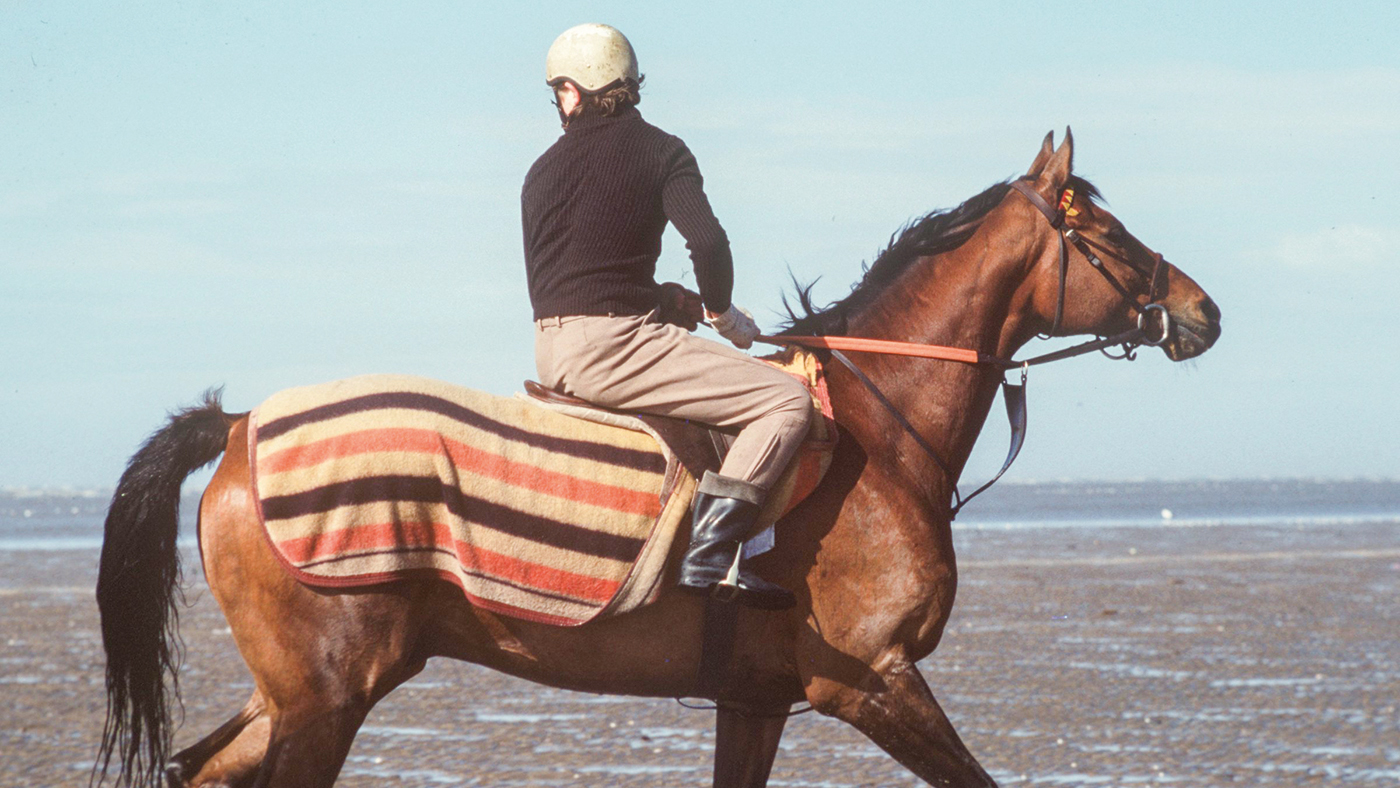
Yet engaging though Ginger was, Red Rum was the star of the show. Almost all those connected with him are no more, while Ginger’s son, the trainer Donald, was too young to remember much about it. The sole exception is Tommy, who barely survived a severe attack of meningitis 15 years ago.
A few years before that, Tommy was asked to reflect on the halcyon era of Red Rum: “How can I ever thank Red Rum enough for what he has done for me, for racing and for the Grand National? He was a legend that should never be forgotten, and never will.”
Red Rum’s finest hour

EACH of Red Rum’s three Grand National victories might warrant this accolade. His third was a triumph for faith over the naysayers who questioned his place in the line-up. The second saw him defy the welter-burden of 12 stone but his trainer, Ginger McCain (pictured), was adamant.
“Red Rum’s first National was the best, because in all honesty you never think you’re going to win a National,” he said. “All you do is go with the hope you’ll run a big race.”
More than a horse in a million

Triple Grand National winner Red Rum takes his final bow at Aintree after sustaining a hairline fracture the previous day, forcing him to retire
IN 1978, when Red Rum was 13 years old, Japanese businessman “Rocky” Aoki offered to buy Britain’s national treasure for £1m. But Red Rum was more than a horse in a million. Three Grand National victories rendered him unique and his owner, Noel le Mare, rejected the offer.
In a nationwide poll in 2006, when respondents were asked to name an equine animal, 33% plumped for Black Beauty but 45% went for Red Rum, who became a highly marketable celebrity in retirement.
“I liked the money,” Ginger said of opening supermarkets, “but it wasn’t my line of country. I didn’t like the silver spoons and the tea towels; all the merchandise.”
This feature was first published in H&H magazine (8 April, 2021)
You may also be interested in…

A nostalgic Grand National tour: which are your favourite Aintree memories?
H&H takes a look back and some memorable Aintree heros

Striking Red Rum mural revealed above beach on which he trained
Artist Paul Curtis said it was a ‘privilege to paint such an iconic horse’

Subscribe to Horse & Hound magazine today – and enjoy unlimited website access all year round
Horse & Hound magazine, out every Thursday, is packed with all the latest news and reports, as well as interviews, specials, nostalgia, vet and training advice. Find how you can enjoy the magazine delivered to your door every week, plus options to upgrade your subscription to access our online service that brings you breaking news and reports as well as other benefits.

